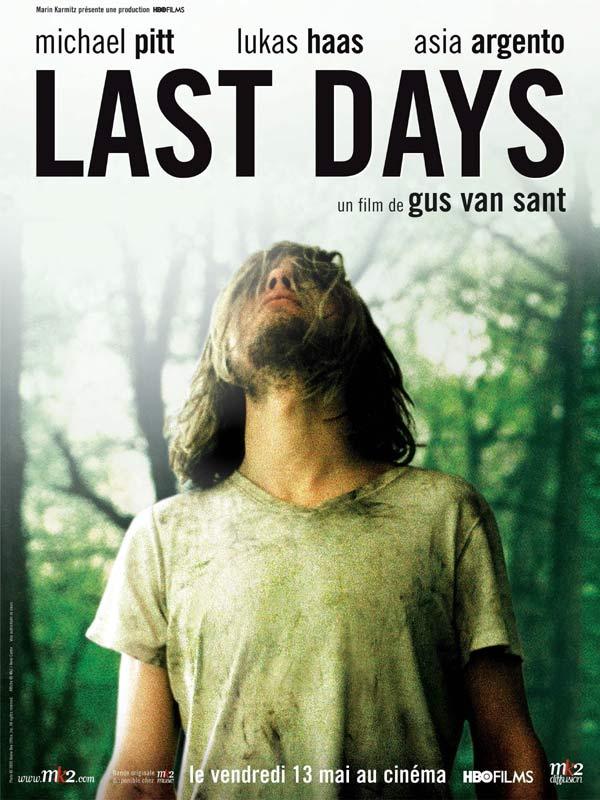In honoring the thrown we must destroy it: an exploration of Gus Van Sant's Last Days

I can watch just about anything. I received my education from an experimental arts college and have braved (and mostly enjoyed) my way through countless "Avant Garde" films. What this means is not specific. Avant Garde may be used to describe monotonous works that reveal their intent well into the construction of their repetition, this is the sort that I prefer. Andy Warhol, James Benning and Luther Price can be sited as examples of this approach. Then there is the type of Avant Garde film (and really this term is exchangeable with Experimental film) which is solely based around its aesthetic qualities such are the films of Phil Soloman, Charles Bukonowski and Stan Brakhage. There is a type of cinematic observation that transcends the subject (be it person or location) in the former approach to Experimental Cinema. In resting with something long enough (as Warhol famously did in films like Blowjob or his 24 hour Empire) other narratives and states of perception begin to occur. When Guz Van Sant's first film in his recent "trilogy of death," or what I am going to call his "film based works," Gerry, was released, one publication called it Ansel Adams meets Andy Warhol. This claim was no understatement. Van Sant's films did acquire the observational stance of, say, Warhol. Gerry was a marvelous film because Van Sant's main concern was the overall cinematic approach. The storyline was secondary, even the characters toted the same name. It seemed the entire film worked up to the famous long shot, walking through the desert at sunrise. But from this removed approach toward narrative, Van Sant accomplished perhaps his most stunning depiction of the human condition. By being non-specific, Van Sant executed his most honed work of specificity.
This does not hold true, however, for Elephant, an abomination of his previous efforts. What seemed to work for Gerry worked because of this generality. In utilizing this approach to depict a socially weighted event, Van Sant's form is lost on its content. Furthermore, its sensational content is confused (or even sentimentalized) by the seemingly documentary style of depiction. The open approach then becomes manipulative because it bears the appearance of being reality - yet there are too many cinematic devices employed, making for a mess of a film.
The important word here is film, because more than any other contemporary American filmmaker, that is what Van Sant is making here. Film. The tangability and awe-inspiring aspects of the medium are fully displayed here, warts and all. It was with great sadness that I sat down with a DVD of Last Days last night. Having seen Gerry and Elephant on the silver screen, I knew the importance of seeing Last Days in theaters, but I just never got around to it. Overall, I must say I liked Last Days. I don't necessarily think it to be a good film, but as another approach towards a socially weighted event, this film is worlds beyond the likes of Elephant. Perhaps Van Sant is slightly too cruel to our Cobain-esque Blake, but in a way, he has to be. So many Gen X-ers that I have spoken to are so completely insulted in the making of the film that only by completely shattering their saintly image of their saint of Grunge can the film move past anything but imitation. The Blake character is so completely useless and so far gone that he (much like Cobain) is a metaphorical ghost before he becomes a ghost in actuality - in a scene as absurdly ridiculous as it is effective and even somewhat poetic. Van Sant depicts him in broken takes from the "last days" of his life, and what this conjures is a greater sense of these "last days" than a forced, emotionally edited Walk the Line style biopic. Because there is seemingly no sense in what visual information is included and what is not, the film functions more as a mood piece than a narrative film. It has been called something like the definitive rock movie, and in a way, it is. There is a scene in which a scenester mouths along to the Velvet Undergrounds "Venus in Furs," and if this does not bring you to a point in time where you have done quite the same thing to the exact same song, perhaps it harks to a time when you have done such a thing to a different song. The camera's unwavering gaze on this figure inquires as to what it is that we are doing, why it is that we do this.
The film is a bit too hipster for its own good. But that's Van Sant for you. Including such hipster essentials as Asia Argento, Velvet Underground, Michael Pitt and even Sonic Youth's Kim Gordon in a tender, but all-too-brief appearance. And the camera can be horrifically condescending to those who enter the Northwest mansion in which the film takes place. But you start to wonder if the camera is not observing from the same drugged up point of view as the mansion's inhabitants. And, just because it's Gus Van Sant, there is a scene of gratuitous gay make-out session between two of the non-Blake male characters.
Overall, the camera's treatment of music, at the core of being, is certainly unrivaled. There is an incredibly long take in which Blake plays his guitar like a little prince behind his drumset thrown and the music is at times awful, sad, beautiful, flawed. But it cuts through the shit and shows that this music that we have made absolute is in fact a man in a room with a guitar. For more information about the film, visit the imdb page for it

0 Comments:
Post a Comment
<< Home